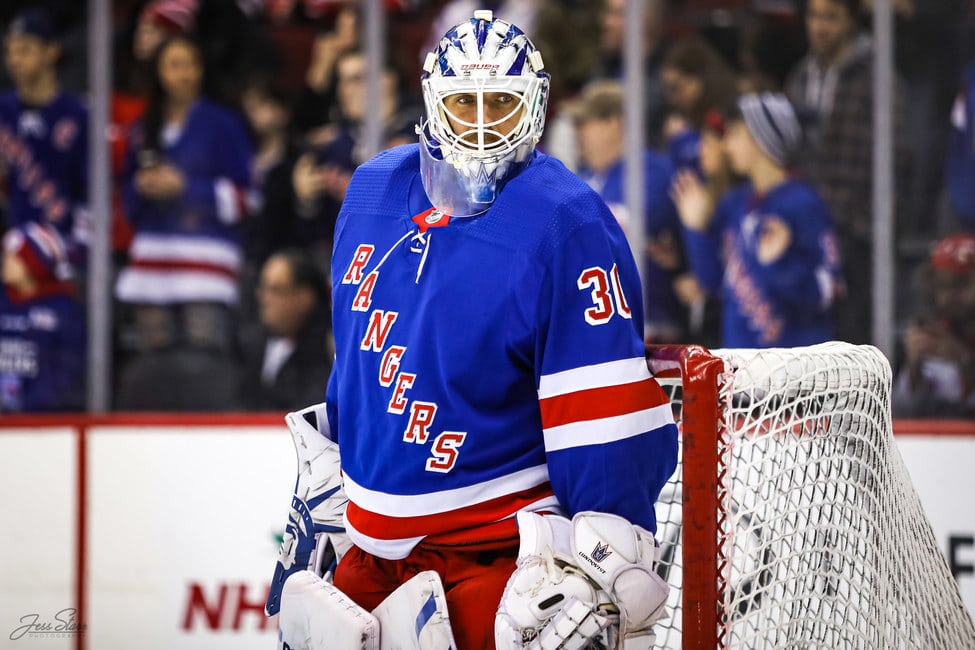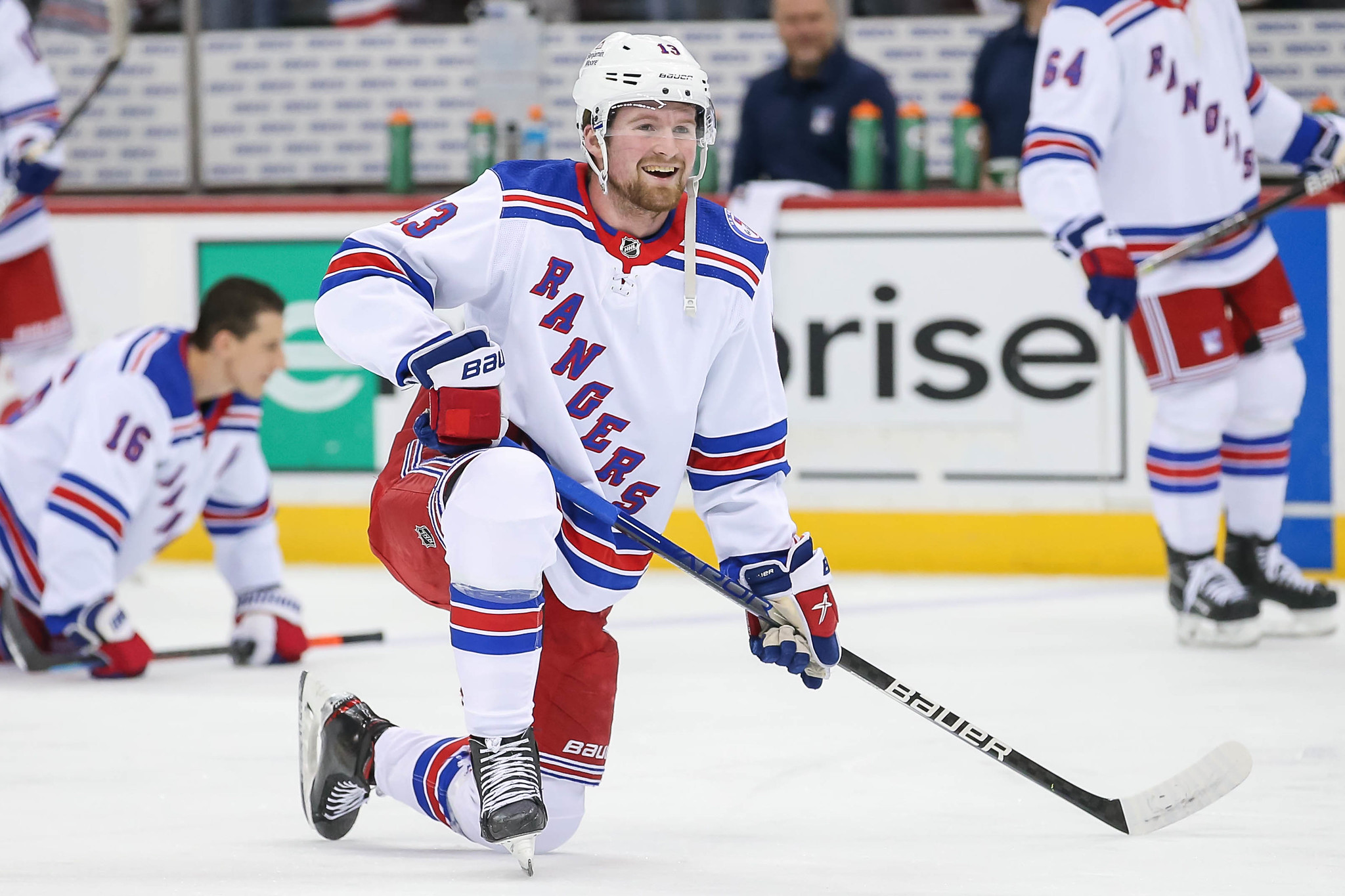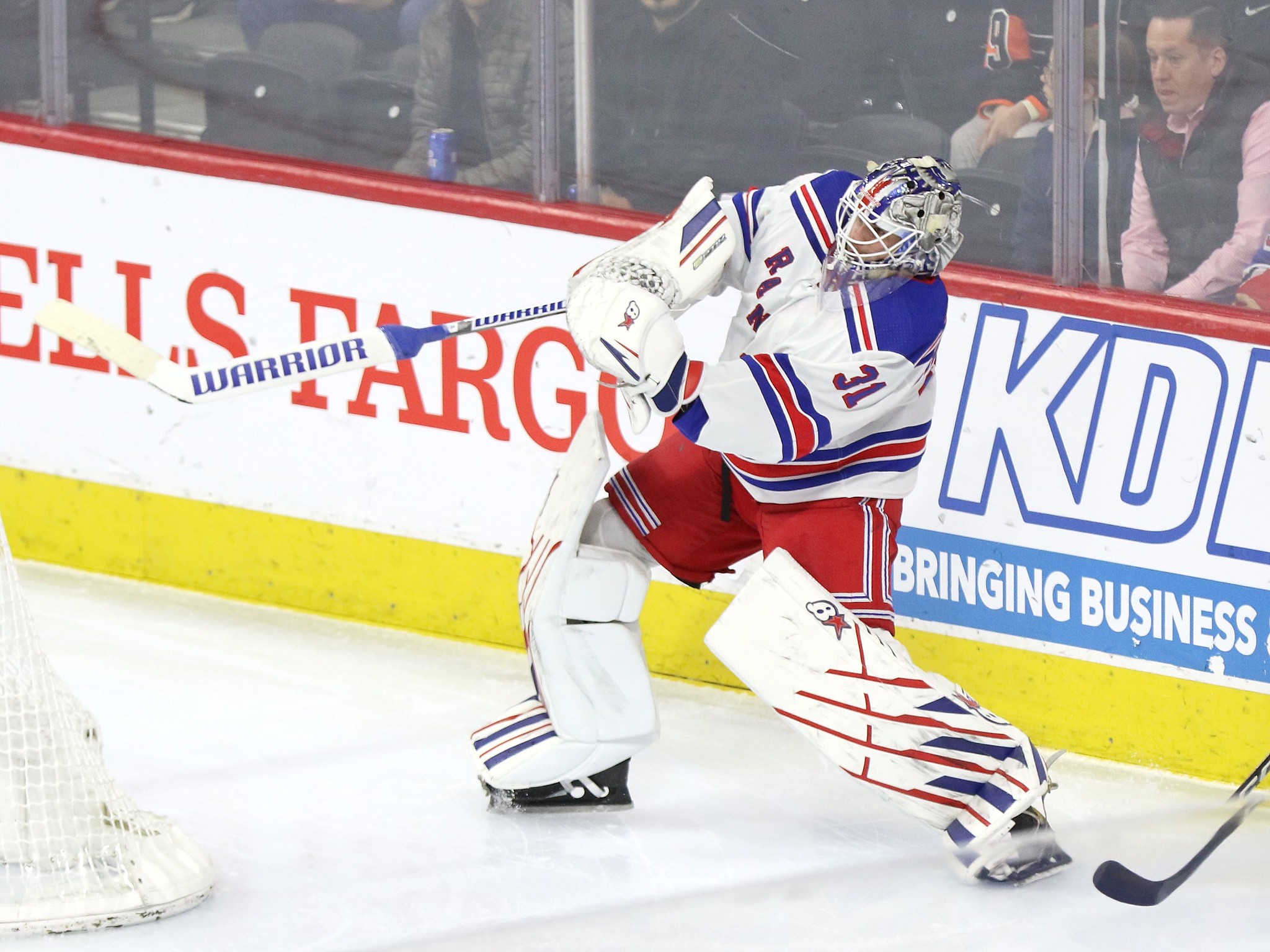If there is one thing the New York Rangers can hang their hat on, it’s their track record of elite goaltending. A position that is a sore spot for so many NHL franchises continues to be a bright spot on Broadway.
They have gone from John Vanbiesbrouck to Mike Richter, Henrik Lundqvist, and current goaltender Igor Shesterkin. Out of this foursome, the only netminder not to win the Vezina Trophy for the league’s top goaltender was Richter, who led the Rangers to their lone Stanley Cup victory of the last 84 years in 1994.
Since the 1984-85 season, when Vanbiesbrouck appeared in 42 games, the Rangers have enjoyed an era of excellence between the pipes. Stunningly, this 40-year run has yielded just one Stanley Cup, as the rest of the roster has lagged behind the brilliance in goal.
On the heels of a Presidents’ Trophy and their second Eastern Conference Final defeat in three seasons, the Rangers remain searching for their first Stanley Cup since 1994. Shesterkin is their most pivotal player, carrying the Rangers deep into the postseason despite subpar five-on-five play and streaky special teams.
Entering the 2024-25 season, the 2022 Vezina Trophy winner is in the final year of a four-year contract that pays him $5.67 million average annual value (AAV). Back on June 2, Mollie Walker of the NY Post reported that Shesterkin’s camp has its sights set on a record-setting $12 million AAV contract extension (from ‘Rangers’ Igor Shesterkin could aim for historic contract after dominant playoff run,’ New York Post, 6/2/24).
The question in front of general manager Chris Drury and the Rangers is simple: are you willing to yet again allocate a hefty percentage of your cap space to a goaltender?
Remembering the Henrik Lundqvist Contract
Just over a decade ago, the Rangers signed the franchise’s all-time greatest goaltender to a new contract that was worth 12.32% of the salary cap when it was signed. It’s a deal everyone would do again because of Lundqvist’s brilliance and importance to the Rangers’ franchise.
Lundqvist, who was coming off of a six-year contract worth $6.875 million AAV (12.13% of the cap when signed in 2008), signed a seven-year extension worth $59.5 million in 2013. His $8.5 million annual cap hit would tie him with Connor Hellebuyck for fourth amongst present-day goalie contracts. In other words, it was a handsome deal for 2013, but one deservedly given to a phenomenal goaltender.

Now, the Rangers find themselves in an eerily similar situation. Shesterkin’s camp wants 12% of the salary cap, just like what Lundqvist earned when he was the Vezina-winning goalie who carried the Rangers on postseason runs. With the salary cap expected to increase to $92 million for the 2025-26 season, a record-setting $12 million AAV would be the asking price.
Many believe the AAV may be higher, with the cap expected to continue increasing, as was the thought process when Lundqvist inked his deal 11 years ago. Undoubtedly, the mindset remains the same as it was when ‘The King’ was a free agent.
The Rangers have arguably the best goaltender in the NHL on their roster. It should be a no-brainer to keep him. But as we have seen play out over the years, that has not been the recipe for success, paving the way for a hard-nosed offseason of negotiations.
Can the Rangers Build a Roster With Less Money to Allocate Elsewhere?
If you have been watching the Rangers since Lundqvist took over in 2005-06, the answer to this question has been no. They have built a team that is good enough to win, especially when the goaltending is elite. That structure has not yielded them a Cup since the turn of the century.
Shesterkin currently has 6.95% of cap space allocated to him. Over the past three postseasons, Shesterkin has been brilliant, but the Rangers have fallen short in each. It has been a struggle to get the most out of their highest-paid players in the crucial games, which has caused the team to fizzle out.
The struggle to complement Shesterkin with a roster that could effectively win a Cup is a question that has to be answered. If the Rangers have not been able to do it while he is on a team-friendly deal now, what makes you think they can on his next deal? Along with Shesterkin, Alexis Lafreniere, K’Andre Miller, Will Cuylle, and others also need contracts after the 2024-25 season.

It’s projected that the Rangers will have $32 million in cap space next season at the current salary cap of $88 million. Should it go to $92 million, Drury will have more breathing room to work with, which he could increase further by moving Jacob Trouba. It is possible to keep all their current players, but with salary increases due for all of them, can they keep all of them and improve the roster in other areas?
Related: Rangers’ Lafreniere Can Earn Long-Term Extension
That is the dilemma when it comes to Shesterkin’s next contract. Like with Lundqvist back in the day, no Rangers fan will say they don’t want Shesterkin to be a Ranger after next season. And the Russian netminder truly deserves every penny he will get paid. Drury must decide if keeping him will minimize their chances of building out the rest of the roster, and if so, are there any capable options out there?
Business vs. Personal Feelings
Before the 2020-21 NHL season, the Rangers bought out Lundqvist. With the cap halted due to the pandemic and Shesterkin waiting in the wings, the franchise decided it best to move on from the franchise great. It was a tough decision that required the franchise to put aside its personal feelings toward the goaltender.
I am not advocating for Shesterkin to be unsigned by the Rangers. I am advocating for a lengthy thought process weighing the business side of this deal with what Shesterkin means to the club. Is there room for negotiation on the term or annual salary of the deal? Can the roster fall into place, given the cap remaining after extending Shesterkin?
There is no debating Shesterkin’s brilliance. It will be hard to replicate that level of play with another goaltender. If a deal can be agreed upon, it is a no-brainer that Drury will make it work. The premise of the deal cannot be solely the player, Shesterkin, but it must be the impact the contract will have on the rest of the roster construction.

You cannot put a price tag on Shesterkin’s importance to the Rangers, but unfortunately, it must be quantified in the hard-cap world of the NHL. How Shesterkin’s camp quantifies it compared to Drury will begin a negotiation that could help shape or hinder the organization’s future.
If the faith exists that a substantial roster can be built around Shesterkin’s price tag, then you re-sign him happily. Of course, faith and action are two different things, and the onus will be on Drury and the rest of the front office to properly allocate their remaining capital to structure a Stanley Cup-caliber roster.
No one wants to see Shesterkin leave in free agency, much as no one wanted to see Lundqvist go. But learning from the past, that alone cannot be why they shell out 12% of the cap or more to their goaltender. Learn from the past and adjust to the future. That is a mantra the Rangers must follow heading into a contract year for their All-Star goaltender.

